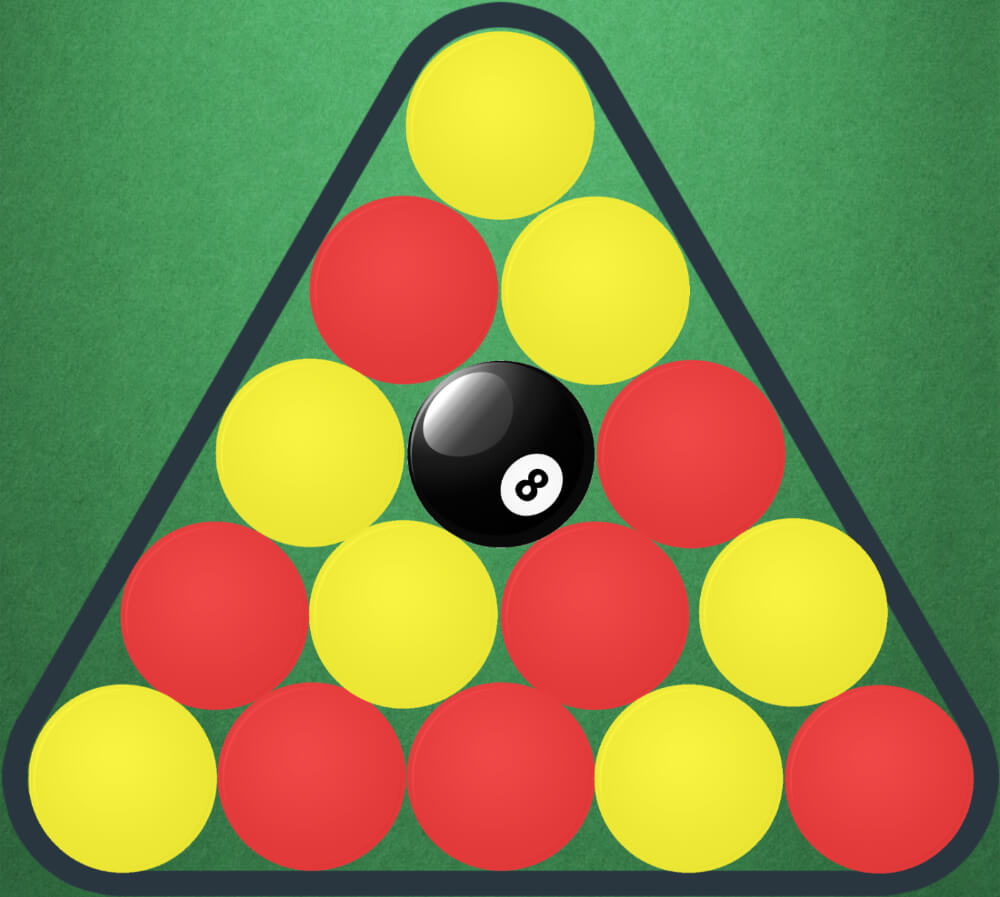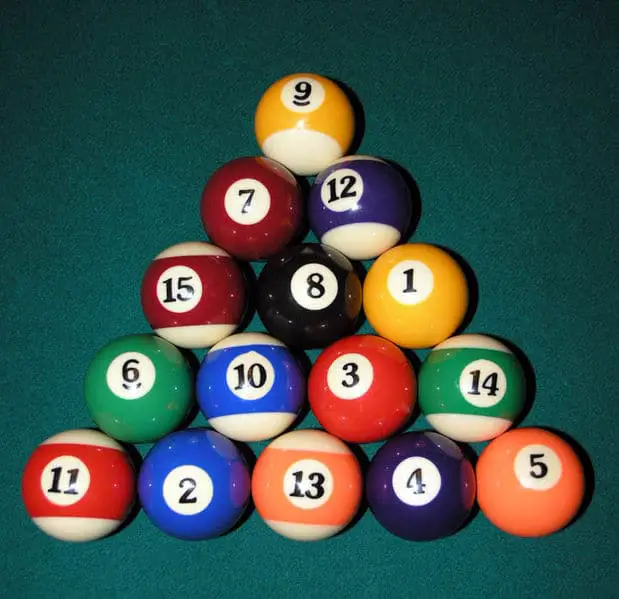Is the perfect break in pool a matter of luck, or is it a science? Mastering the art of racking pool balls is the foundational key to unlocking more successful games and elevating your overall performance.
The initial setup in a game of pool, the racking of the balls, is far more critical than many realize. It's the genesis of every break, dictating the potential for a strong start and, ultimately, influencing the outcome of the game. The importance of a well-executed rack cannot be overstated. It sets the stage for the entire match, impacting everything from the initial break to the strategic positioning of balls across the table.
Different pool games, such as 8-ball, 9-ball, and 10-ball, each have unique racking requirements. For instance, in 8-ball, the object is to pocket all of one's assigned group of balls (solids or stripes) and then legally pocket the 8-ball to win. In 9-ball, the game is played with balls numbered 1 through 9, and the players must strike the lowest numbered ball on each shot. 10-ball is similar to 9-ball but uses balls numbered 1 through 10, offering a more challenging arrangement due to the higher number of balls used. These variations highlight the need to understand the specific racking rules for each game to ensure a fair and engaging contest.
Racking pool balls is more than just a procedural step; it is an art form that requires precision, consistency, and a fundamental understanding of the game. A well-executed rack provides a tightly packed formation, maximizing the chances of spreading the balls on the break and creating favorable opportunities for subsequent shots. Conversely, a poorly racked set can lead to a disadvantage, giving opponents an early edge or limiting strategic options.
The process begins with the foot spot, the marked location on the pool table's head string. The rack, typically a triangle, is carefully positioned with its apex (the point) aligned with the foot spot. The first ball, the apex ball, plays a critical role in the break, with its position directly impacting the trajectory of the other balls. Generally, in 8-ball, the one ball is placed at the apex. Then, a stripe and a solid ball go to the bottom corners. The other balls are then randomly distributed within the rack, maintaining the principles of a tight formation to prevent any open contact points. For 9-ball, the 1 ball is always positioned at the apex, and the 9-ball is centered, and the rest are placed randomly. In 10-ball, the 1 ball leads at the apex, the 10 ball is centered, and the remaining balls are again placed at random. Regardless of the game, balls should be spread randomly to prevent clustering. As a general rule, it is best to avoid placing a solid or stripe ball next to each other in a row.
The market is flooded with pool ball racks of various shapes, sizes, and materials, from basic plastic triangles to high-end, precision-engineered racks designed to provide optimal ball contact and consistent racking. Products such as the "Cuesports magic ball rack 8, 9, and 10 ball combo pack," the "Black predator aerorack pool ball rack," and the "Patikil 6 pcs magic rack" highlight the diversity of options available to players of all levels. These racks offer different designs and features to accommodate the unique requirements of specific games. For example, the "Magic ball rack pro combo set" provides both 8-ball and 9/10-ball racks, catering to players who enjoy multiple game formats. The "aerorack" is particularly acclaimed for its modern aesthetic appeal, helping players rack in style and achieve more successful breaks.
Key considerations for achieving the perfect rack are:
- Apex Ball Placement: Ensuring the correct ball is positioned at the apex of the rack.
- Tight Racking: Packing the balls as closely as possible.
- Manual Locking: Manually ensuring the balls are locked in place within the rack, reducing potential gaps.
- Tapping Down: Gently tapping the balls to settle them further.
There are various methods, and equipment used to improve the racking process. One of these is the use of a template. It helps ensure proper placement. The "magic ball rack" is designed to facilitate efficiency and consistency, making it easier for players to achieve the perfect rack, which is considered the original rack template. Many of these racks and systems are designed to enhance the gameplay, improving the racking process.
Common racking mistakes to avoid include failing to pack the balls tightly, improperly positioning the apex ball, and using a worn or warped rack. Addressing these issues will lead to a more uniform and consistent rack, which, in turn, enhances a player's chances of achieving a favorable break. Regardless of the game, the goal should be to have a tightly packed formation for the break.
Disclaimer: This information is intended for educational and informational purposes only and does not constitute professional advice. The efficacy of the practices and products mentioned may vary based on individual skill, equipment quality, and adherence to the instructions. Always consult the official rules and regulations of the specific game you are playing.



Detail Author:
- Name : Viva Ortiz
- Email : erich68@hahn.biz
- Birthdate : 1997-04-02
- Address : 8558 Johnston Underpass Suite 364 Beckerberg, WI 07616-6857
- Phone : 323.654.5294
- Company : Marquardt Ltd
- Job : Recreation and Fitness Studies Teacher
- Bio : Consectetur est nemo aliquam omnis ducimus delectus voluptatem explicabo. Aut nulla mollitia sunt sed nisi et eum aperiam. Aperiam eaque laboriosam quis cupiditate aut est maxime quasi.